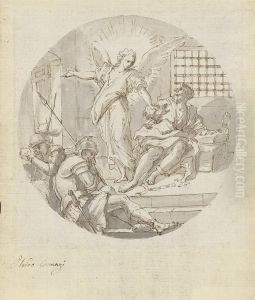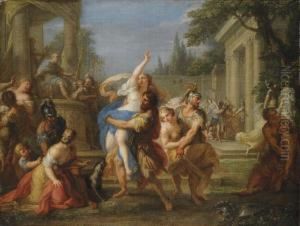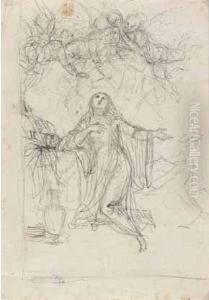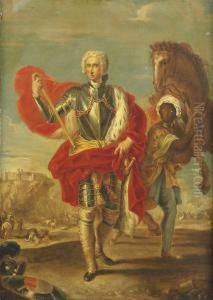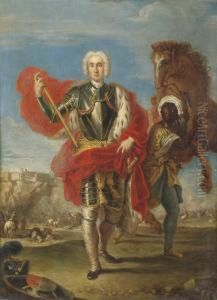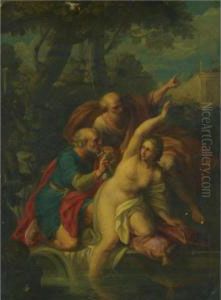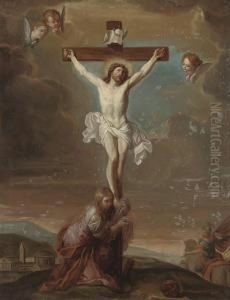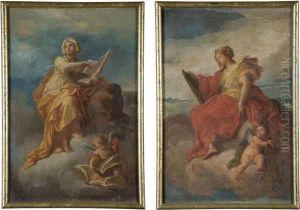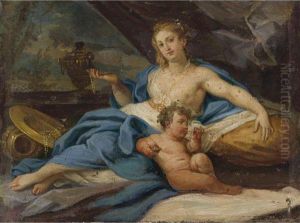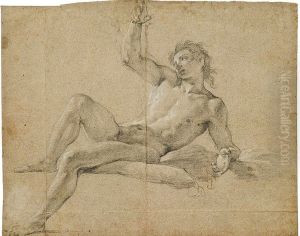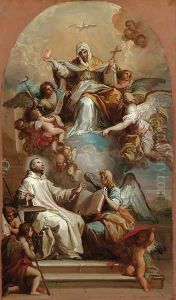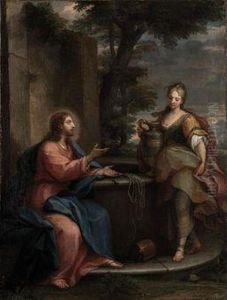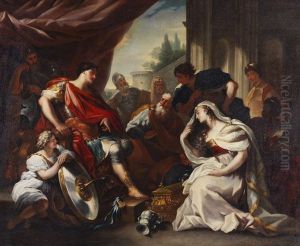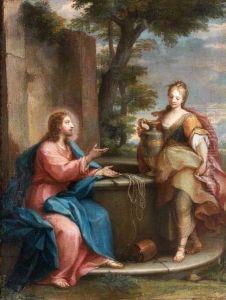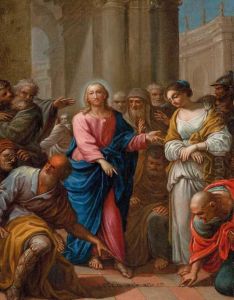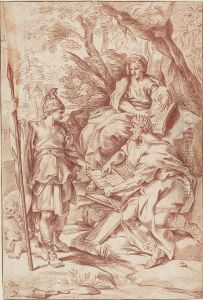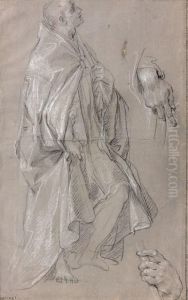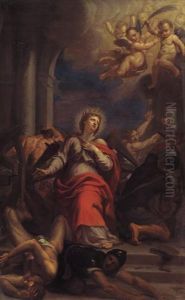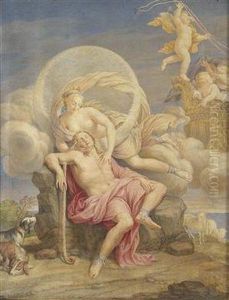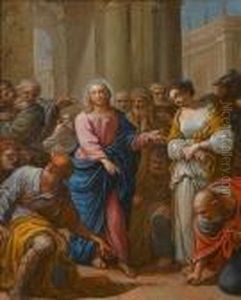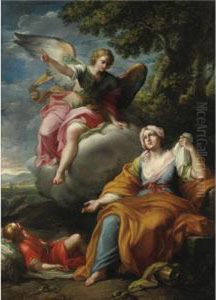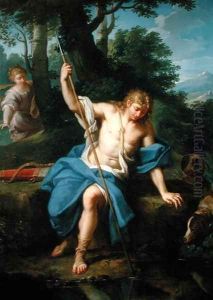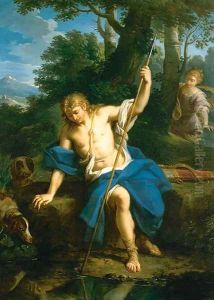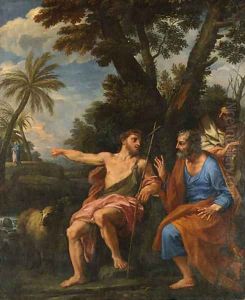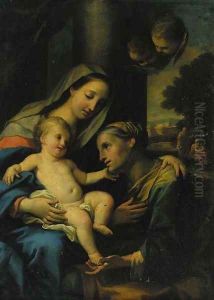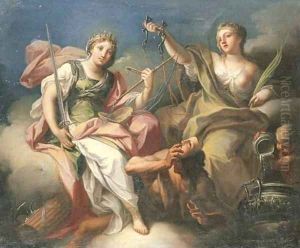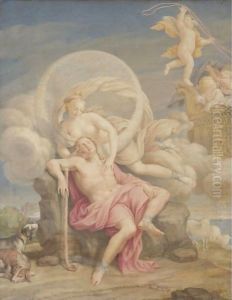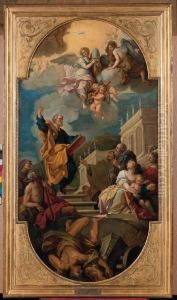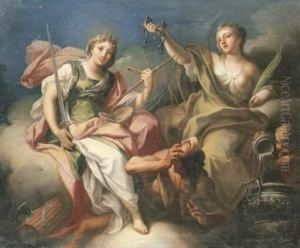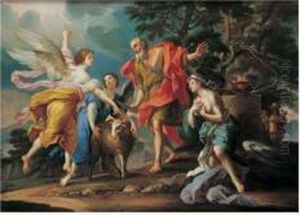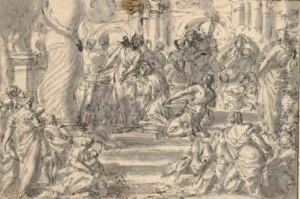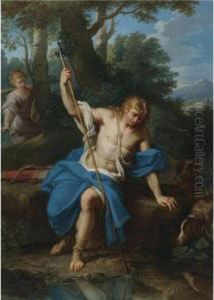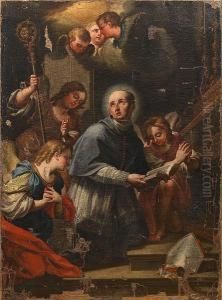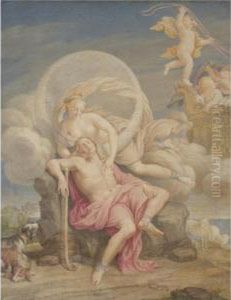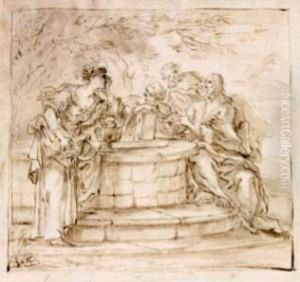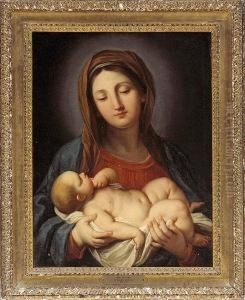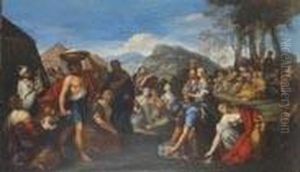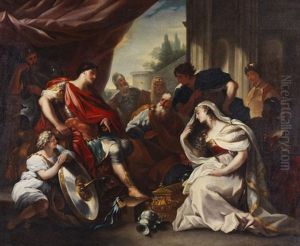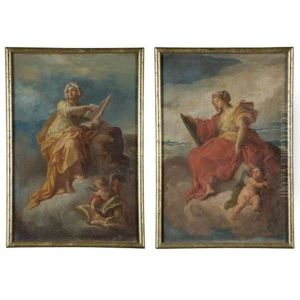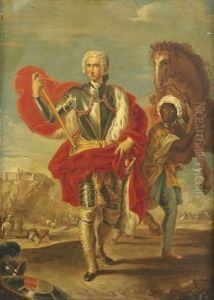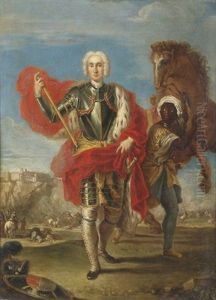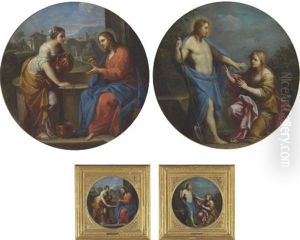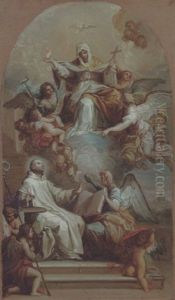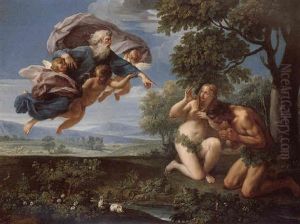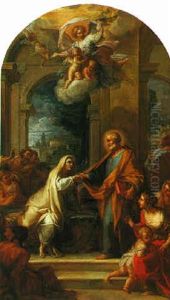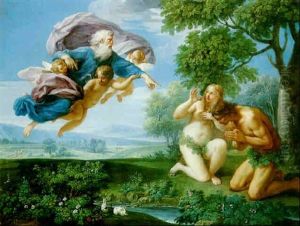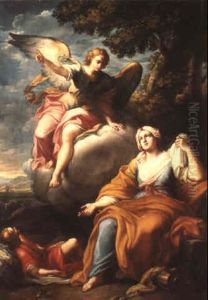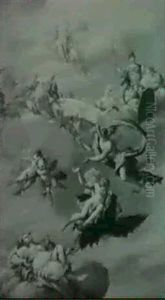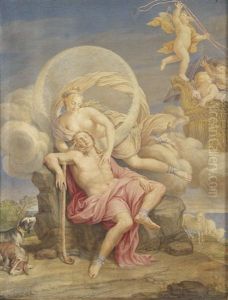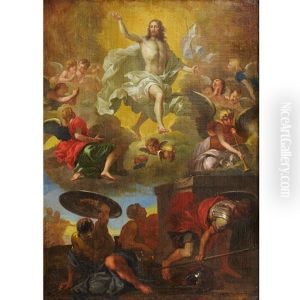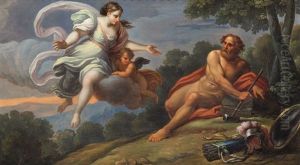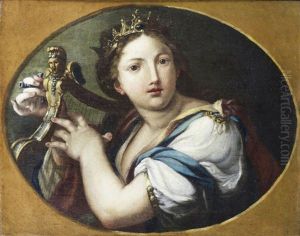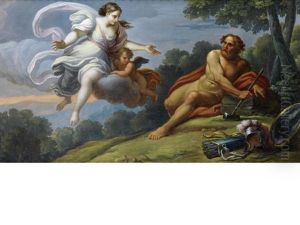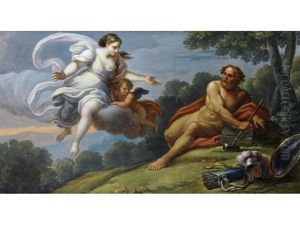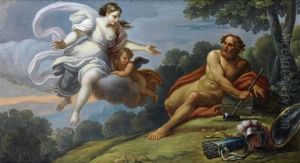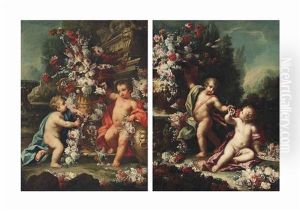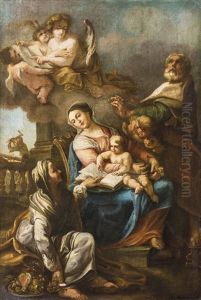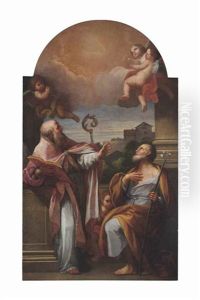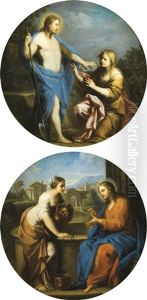Placido Costanzi Paintings
Placido Costanzi was an Italian painter and engraver, born in 1702 in Rome, Papal States. He is known for his work in the Rococo style and was particularly noted for his history paintings and portraits. Costanzi received his artistic training in Rome under the tutelage of Benedetto Luti, who was a prominent painter of his time. He also studied the works of other masters such as Carlo Maratta, which greatly influenced his style and technique.
Costanzi's career flourished in his native city, where he became a respected artist among the Roman elite. His work was characterized by a delicate use of color and a graceful portrayal of figures, which were typical of the Rococo period. He was adept at capturing the likeness and personality of his sitters, which made him a sought-after portraitist. Costanzi's religious and mythological scenes also gained him recognition, with their elegant compositions and skilled handling of light and shadow.
In addition to his painting, Costanzi was known for his engravings, which helped disseminate his fame beyond Italy. He was a member of the Accademia di San Luca, the prestigious academy of artists in Rome, and his works were collected by important patrons, including members of the church and the aristocracy.
Throughout his career, Costanzi received commissions for altarpieces and decorative schemes for churches as well as portraits for private clients. Some of his notable works include the altarpiece 'The Martyrdom of Saint Stephen' for the church of San Stefano Rotondo in Rome and the 'Madonna and Child with Saints' for the Basilica of San Giovanni in Laterano.
Placido Costanzi passed away in 1759 in Rome, leaving behind a legacy of works that continue to be appreciated for their elegance and artistic merit. His contributions to the art of the Rococo period in Italy remain significant, and his paintings can be found in various museums and collections across the world.
